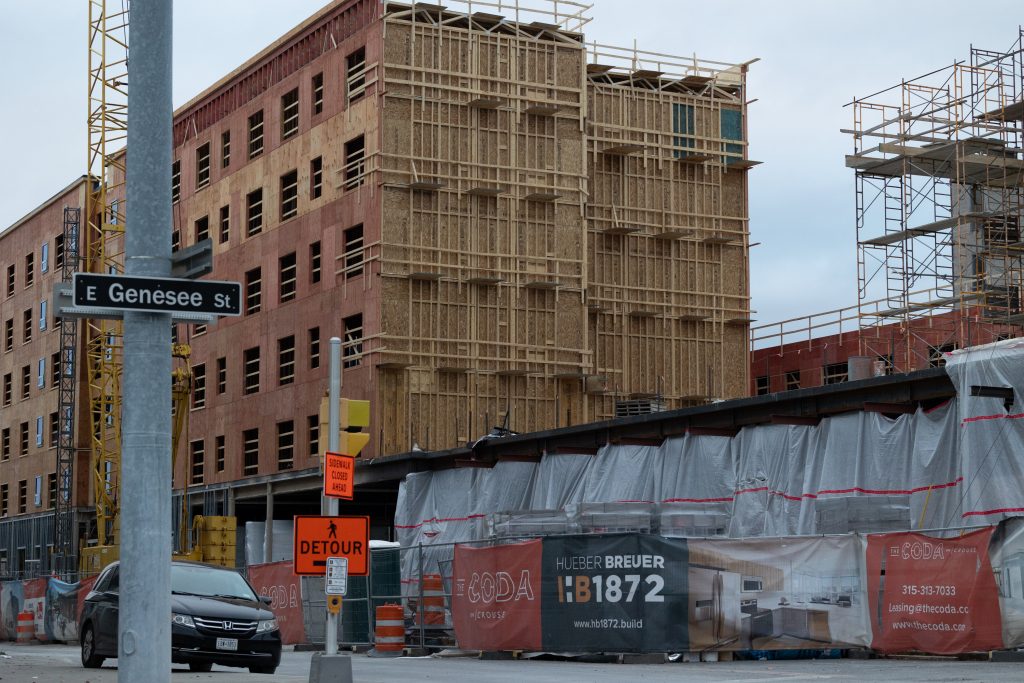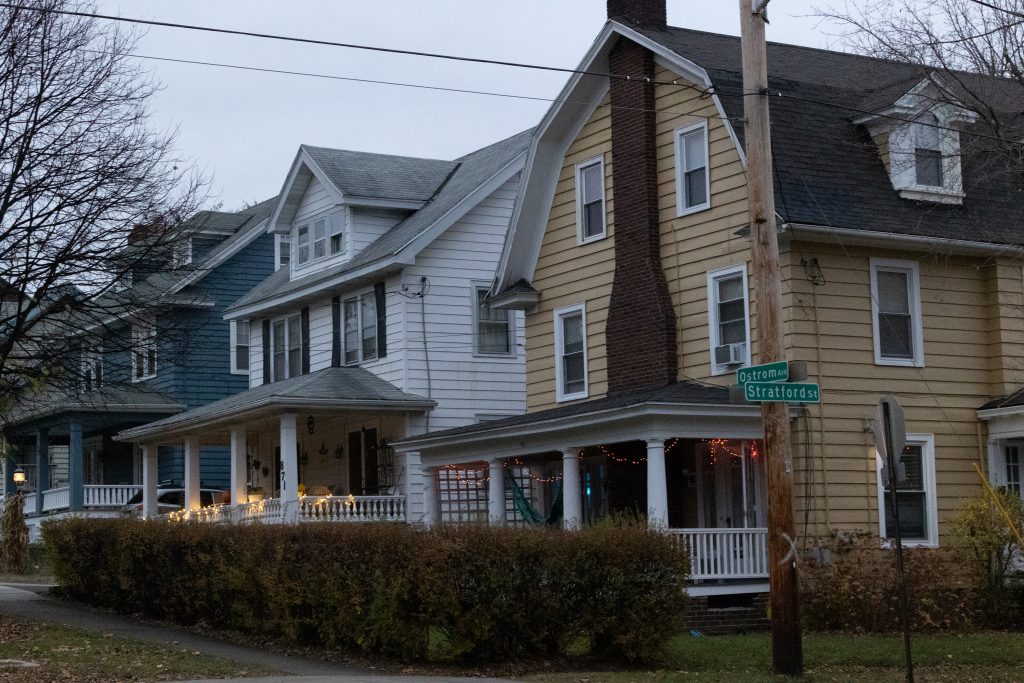SU students struggle to secure on-campus housing
SU students struggle to secure housing
Students who decide to live on-campus face limited options on South Campus and in the University Neighborhood.

Syracuse University students who live on campus are more likely to feel included in the community. Still, the options for on-campus apartments for upperclassmen are limited depending on how many students decide to stay after their on-campus requirement of two years.
In the first school year after COVID-19 hit college campuses across the country, occupancy in off-campus student housing fell from 94% to 88%, indicating a shift reflecting whether students chose to live on-campus or at home due to health and privacy.
The popularity of off-campus apartment complexes can be observed with new developments popping up every year – like The Coda on Crouse, the latest complex under construction. Students who live there next school year will have access to numerous amenities but face the growing cost of luxury housing.
The average cost of student housing in the U.S. is $860. However, in New York state, it’s $2,040 — more than double the average. Students who live off-campus also need to plan for transportation and face the problem of limited parking.
For undergraduate students who want to live in apartment-style dorms on campus, there are two options, South Campus or 727 South Crouse Ave.
“Demand has been steady, and our on-campus housing spaces (approx. 8,200 beds) have been near capacity during that time,” said Jennifer DeMarchi, communications director of business, finance, and administrative services.
To search for off-campus housing, students can use the off-campus housing search site, where every listing is checked to ensure they are safe.
“Students may utilize any search site. However, the same controls might not be in place to ensure properties are approved by the city,” apartment living director Eric Nestor said.
Most students are willing to take these risks once they’re upperclassmen. But students like Yamila Evans and Jude Padilla found a solution that lets them lease on South Campus, close to athletic facilities with access to the university’s trolley system.
“During the school year, the trolleys are running early in the morning and all the way throughout the evening,” Evans said. “If I have evening classes that end at 10 p.m., I don’t worry about not having a ride back, there’s always a trolley.”
Evans is a graduate student at the School of Education, studying for her M.S. in clinical mental health counseling. Evans was a student-athlete for five years, playing softball alongside her roommate, Padilla. Padilla is studying biology and psychology at the College of Arts and Sciences.

Padilla and Evans lived together in the University Village Apartments on Colvin in 2022, where each roommate had a private bedroom and bathroom.
While living in the university neighborhood, they received frequent notifications about break-ins near their home. “When you constantly get those emails, and you’re not home every day, you’re a little stressed,” Padilla said.
Padilla also found the snow not plowed off-campus and used to struggle with getting a ride to Manley Field House for the team’s lift at 6 a.m. When Evans lived off-campus, she also struggled with transportation.
“I lived in Theory on East Genesee, probably half a mile away from campus. It wasn’t a lot to walk if I missed the shuttle,” Evans said. “If I did have to walk, it was fine, but not in the snow or at night. It was terrible, I wasn’t going to walk at 9 p.m. by myself.”
Students, particularly sophomores who are required to live on campus, face problems with living on campus. These problems include displacement onto overflow housing and having no choice but to live on South Campus, which is less accessible to the main campus by foot.
Where students live is dependent on both their needs and wants, but “cost can factor into this as well. Sometimes living on-campus can be more cost-effective than living off,” said Rachel Froelick, residence director for off-campus student living.
“Our office also acts as a liaison between students and resources for the university,” Froelick said. “If there is something I can’t directly help a student with, I help them figure out which office is best to assist them. We work with off-campus students and commuters.”
When Evans and Padilla decided to live at UV Colvin, they applied nine months before they needed to start their lease.
“We did it really in advance to guarantee we had housing. We had a teammate who thought she could stay a third year on South [Campus],” Evans said. “She waited last minute and couldn’t get in anywhere.”
